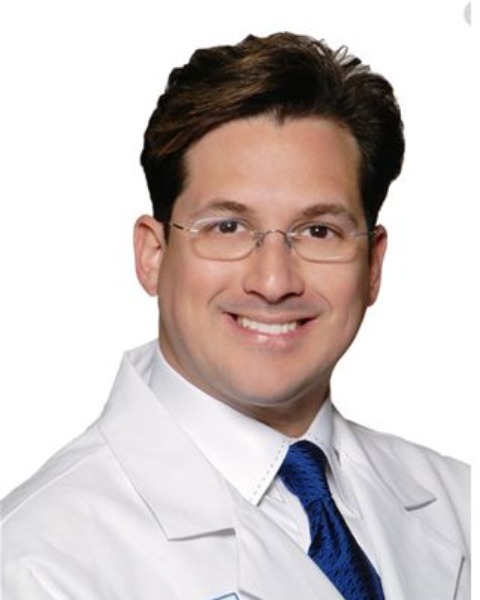Degenerative
Clinical Outcomes of Hybrid Cervical Total Disc Arthroplasty Combined with Anterior Cervical Discectomy and Fusion
Wednesday, February 21, 2024

Jason E. Garber
Neurosurgeon
Las Vegas Neurosurgical Institute
Las Vegas, NV, US
Presenting Author(s)
Introduction: Hybrid surgery (HS), combining adjacent anterior cervical discectomy and fusion (ACDF) and cervical disc arthroplasty (CDA), is a relatively recent treatment option for multilevel cervical degenerative disc disease (DDD). There are minimal patient-reported cervical HS outcome measures published to date.
Objectives: Given the novelty of HS and the relative shortage of clinical data adequately evaluating the treatment option, this current study aims to assess the patient-reported outcome measures, patient satisfaction, complications and reoperation rates of cervical hybrid procedures for symptomatic cervical multilevel DDD in a single institution.
Methods: Retrospective cohort study data was collected and analyzed from patients who received cervical HS for symptomatic cervical DDD between 06/2018 and 02/2020. A total of 34 patients (13 male, 21 female) with mean age of 51.7±9.2 years (range 36–71), and follow-up 3-5 years are included in this report: 26 patients had 1-level CDA and 1-level ACDF (1+1); 3 patients had 2-level CDA+1-level fusion; 7 patients had 1-level CDA+2-level fusion; and 1 patient had 1-level TDA+3-level fusion. Data was collected preoperatively and postoperatively at 3, 6, 12, and 18 months, then yearly thereafter. Patient reported outcome measures included patient satisfaction, Visual Analog Score (VAS) for neck and arm pain, and Neck Disability Index (NDI). Complication, reoperation, readmission rates, operation duration, length of stay (LOS), opioids use were also assessed.
Results: Improvement of pain and disability scores were clinically significant and these improvements were sustained throughout the follow-up period. There were no reoperations. All patients stayed in the hospital 23 hours or less. Average estimated blood loss was 7.3±3.4 ml (range 5-15 ml), and average operative time was 37.8±3.4 minutes (range 31-42 minutes). Average return to work/activities was 26±3 days. 3 patients had dysphonia at 6-week follow-up, in 1 patient dysphonia remained at 3-month follow-up.
Conclusion : This study represents clinical experience of a single surgeon with the cohort of patients undergoing HS reported to date. Cervical HS for cervical DDD demonstrates favorable clinical outcomes at short- to midterm follow-up. Patients undergoing HS are not at increased risk of perioperative complications and may benefit from fewer postoperative complications and shorter LOS.
Objectives: Given the novelty of HS and the relative shortage of clinical data adequately evaluating the treatment option, this current study aims to assess the patient-reported outcome measures, patient satisfaction, complications and reoperation rates of cervical hybrid procedures for symptomatic cervical multilevel DDD in a single institution.
Methods: Retrospective cohort study data was collected and analyzed from patients who received cervical HS for symptomatic cervical DDD between 06/2018 and 02/2020. A total of 34 patients (13 male, 21 female) with mean age of 51.7±9.2 years (range 36–71), and follow-up 3-5 years are included in this report: 26 patients had 1-level CDA and 1-level ACDF (1+1); 3 patients had 2-level CDA+1-level fusion; 7 patients had 1-level CDA+2-level fusion; and 1 patient had 1-level TDA+3-level fusion. Data was collected preoperatively and postoperatively at 3, 6, 12, and 18 months, then yearly thereafter. Patient reported outcome measures included patient satisfaction, Visual Analog Score (VAS) for neck and arm pain, and Neck Disability Index (NDI). Complication, reoperation, readmission rates, operation duration, length of stay (LOS), opioids use were also assessed.
Results: Improvement of pain and disability scores were clinically significant and these improvements were sustained throughout the follow-up period. There were no reoperations. All patients stayed in the hospital 23 hours or less. Average estimated blood loss was 7.3±3.4 ml (range 5-15 ml), and average operative time was 37.8±3.4 minutes (range 31-42 minutes). Average return to work/activities was 26±3 days. 3 patients had dysphonia at 6-week follow-up, in 1 patient dysphonia remained at 3-month follow-up.
Conclusion : This study represents clinical experience of a single surgeon with the cohort of patients undergoing HS reported to date. Cervical HS for cervical DDD demonstrates favorable clinical outcomes at short- to midterm follow-up. Patients undergoing HS are not at increased risk of perioperative complications and may benefit from fewer postoperative complications and shorter LOS.
